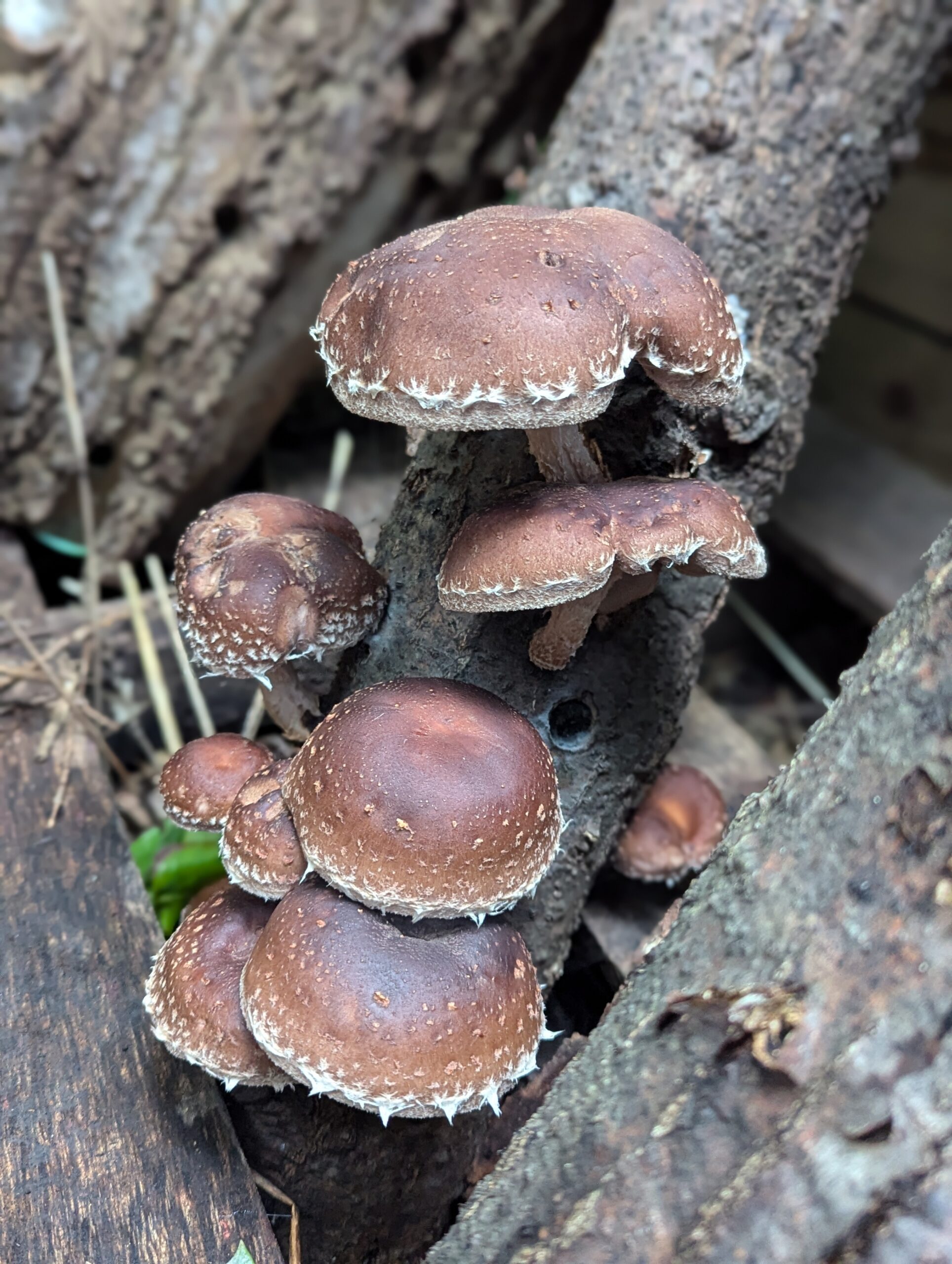Your cart is currently empty!

Log Grown Mushrooms
A step-by-step guide to our annual inoculation practice, tools, and fruiting process.
Mushrooms are often envisioned as a like it or hate it portion of one’s diet. You either eat mushrooms or don’t due to taste and texture. Can you imagine talking about vegetables that way?
Do you eat vegetables?
Why yes, of course! I especially love asparagus, broccoli and artichokes!
We understand that vegetables are a vital component of a human’s diet, and eat vegetables without doubt. It’s WHAT vegetables and HOW they are prepared that is the question. What would it sound like to ask someone who has been eating a wide variety of mushrooms all of their life about their preference in fungi on their plates?

The problem is, many of us are only exposed to food as the grocery stores supplies it. This limits us to Portobello (Agaricus bisporus), Button (Agaricus bisporus), or Baby Bella (Agaricus bisporus). See the pattern? Specialty markets on the other hand, often provide a few unique options. These most commonly include; King Oyster (Pleurotus erynggi), Enoki (Flammulina filiformis) and Oyster (Pleurotus ostreatus). Expanding still, independent gourmet sources often carry even more options. Most commonly, these include Shiitake (Lentinula edodes), Lion’s Mane (Hericium erinaceus), Chestnut (Pholiota adiposa) and Oyster (Pleurotus ostreatus)! But, this ascending scale of options (and quality) usually comes with an ascending scale of cost as well. And, paying $16/pound isn’t easy for most of us. So, what can we do to diversify our diets with mushrooms, without breaking the bank? We can forage and grow our own, of course!
Growing your own mushrooms is relatively simple, cost effective AND you get a lot of bang for your buck…or more accurately, yield for your inputs, as there aren’t many ‘bucks’ in this process. It’s very nearly cost free. Here is what you’ll need:
- Freshly cut, dormant logs from compatible hardwood trees
- Mushroom spawn. We’ll use sawdust spawn.
- An angle grinder and 12mm screw tip bit with stop.
- Inoculation Tool
- Wax and Crockpot
This article will outline the process of growing common gourmet mushrooms outdoors, in logs. We’ve been doing this for 3 years with great success and abundant yields. It has transformed our familiarity with fungi, appreciation for it’s nutritional value, savory qualities, and adding value to an otherwise underutilized, shady part of our property. This winter became incredibly busy with the startup process of building up the nursery, and faced with the thought of skipping a year of inoculating mushroom logs, I realized just how important this work is for our livelihood. We yield about a half pound of mushrooms from each log, every 7-8 weeks for the summer. Multiply that out through more than 50 logs that will produce for 3-5 years each, and you have a HUGE food and nutritional source. In short, mushroom log inoculation weekend never gets skipped. It’s simply too important.
The Process
We inoculate approximately 150-200 logs in one weekend each year. With the supplies gathered and the crockpot started, we need to fell and collect logs. Matching the trees available with the choice hardwoods of the mushroom varieties chosen, a few varieties become obvious choices. This year, we focused on Hophornbeam (for Shiitake), Beech (Shiitake) and Poplar (Oyster). Wherever you source your mushroom spawn should have a handy chart for reference to match varieties of log grown mushrooms with hardwoods.






Shiitake



